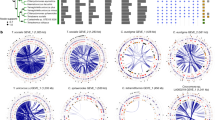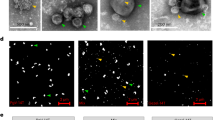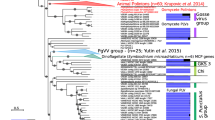Summary.
Members and prospective members of the family Phycodnaviridae are large icosahedral, dsDNA (180 to 560 kb) viruses that infect eukaryotic algae. The genomes of two phycodnaviruses have been sequenced: the 331 kb genome of Paramecium bursaria chlorella virus (PBCV-1) and more recently, the 336 kb genome of the Ectocarpus siliculosus virus (EsV-1). EsV-1 has ∼ 231 protein-encoding genes whereas, the slightly smaller PBCV-1 genome has 11 tRNA genes and ∼ 375 protein-encoding genes. Surprisingly, the two viruses only have 33 genes in common, of which 17 have no counterparts in the databases. The low number of homologous genes between the two viruses can probably be attributed to their different life styles. PBCV-1 is a lytic virus that infects a unicellular, endosymbiotic freshwater green alga whereas, EsV-1 is a lysogenic virus that infects a free-living filamentous marine brown alga. Furthermore, accumulating evidence indicates that the phycodnaviruses and their genes are ancient, thus allowing significant differences to have evolved. This review briefly describes some of the biological properties of the phycodnaviruses, focusing on PBCV-1 and EsV-1, and then compares their genomes.
Similar content being viewed by others
Author information
Authors and Affiliations
Additional information
Received December 12, 2001; accepted March 6, 2002 Published online May 25, 2002
Rights and permissions
About this article
Cite this article
Van Etten, J., Graves, M., Müller, D. et al. Phycodnaviridae– large DNA algal viruses. Arch. Virol. 147, 1479–1516 (2002). https://doi.org/10.1007/s00705-002-0822-6
Published:
Issue Date:
DOI: https://doi.org/10.1007/s00705-002-0822-6




